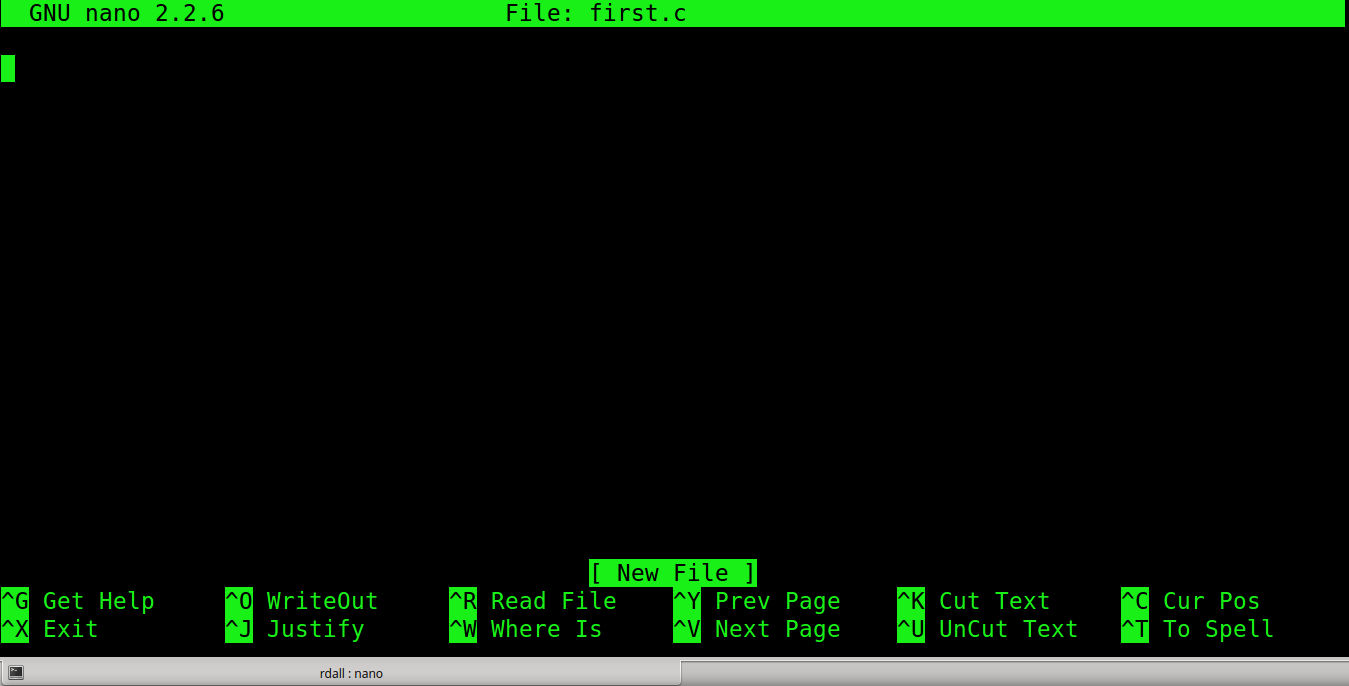
C Programming in 2021
by Ray Dall
################################################################################Section 1
################################################################################

|
cd [ENTER] mkdir ./CODING [ENTER] cd ./CODING [ENTER] |
******************************************************************************** One final note on text editors for "purists" - There are those who teach that you MUST learn vi. They teach this under the false impression that vi can be found on any system. CATEGORICALLY NOT TRUE. I have found systems that did NOT have vi or vim, and only had ed. While if you do not know vi or vim, you can start vi or vim with the -e (vi -e, vim -e), and it will work exactly like ed, because that was the first editor, and vi and vim are backward compatible. If you know ed, you can use vi or vim. Not necessarily the other way around. ********************************************************************************
|
nano first.c |

|
// THIS IS A TEST /* There are two kinds of COMMENT statements in C Single line comments which begin with // ... and multiple line comments that start with a slash asterisk, and end with an asterisk slash. */ // Comments don't actually DO anything. |
|
nano first.c |
// type name arguments endpunc
int main () {}
|
|
cc first.c |
ls [ENTER] |
$> ls a.out first.c $> |
$> ./a.out $> |